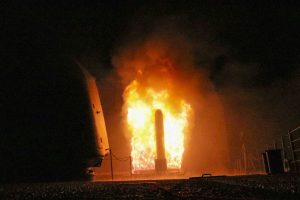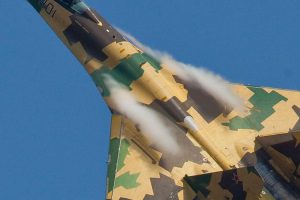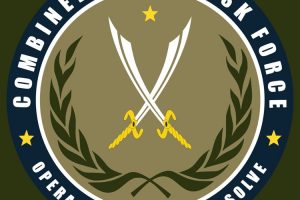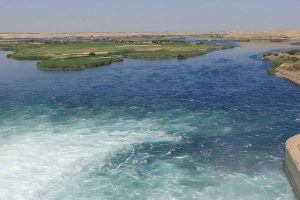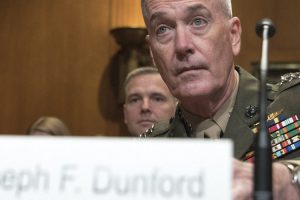The Syrian Democratic Forces announced on Tuesday, June 6 the launch of the final stage in the campaign to retake Islamic State’s de facto capital of Raqqa.
#BREAKING: We are starting the great battle to liberate #Raqqa: Syrian Democratic Forces #SDF#WrathOfEuphrates #Syria #YPG pic.twitter.com/z2mqTPTcpo
— Rojava Defense Units | YPG (@DefenseUnits) June 6, 2017
SDF spokesperson Talal Silo read a statement on behalf of the general command:
“Today, in the name of the Operations Room Wrath of Euphrates Command, we announce that we have launched the ‘Great Battle’ for the liberation of the city of Raqqa, which the gangs have made the capital of terror and terrorism … We state that the battle plan which has been discussed with our partners on the ground, the International Coalition, is ready to be implemented.”
Syrian Democratic Forces statement
The SDF and Operation Inherent Resolve, the US-led Coalition against ISIS, have bombarded Raqqa in recent days, with the SDF launching more than 30 artillery and mortar strikes in North Raqqa on Monday and the coalition attacking the northwest part of the city with multiple airstrikes, according to Qasioun News.
Silo said the SDF launched the operation from the north, west and east simultaneously, cutting off the city in those directions. SDF commander Rojda Felat told AFP news agency that forces entered the city of Raqqa from the eastern district of Al-Meshleb on Tuesday, less than an hour after announcing the start of the offensive.
Once Raqqa falls, Islamic State will have control only in parts of Deir ez-Zor in eastern Syria, as well as western Mosul, where Coalition-backed Iraqi Security Forces are close to liberating the city.
The Great Battle operation launch comes one day after the first anniversary of the death of YPG commander Abu Layla. Layla died on June 5, 2016, two days after an ISIS sniper shot him in the head during a battle in the Manbij countryside.
US weapons and equipment
Silo said on Tuesday that SDF has “an agreement with the Coalition forces, especially the United States, that they will deliver weapons to us for this operation of the liberation of Raqqa.”
A Department of Defense spokesperson confirmed on May 30 that the US-led Coalition against ISIS began supplying Kurdish groups within the SDF with arms and equipment. The delivery was part of a Pentagon plan approved by US President Donald Trump on May 9.
Maj. Adrian Rakine-Galloway told Grasswire that the SDF, backed by US and Coalition forces, are “the only force on the ground that can successfully seize Raqqa in the near future.”
US troops from the 11th Marine Expeditionary Unit are expected to be working with the SDF and Syrian Arab Coalition, although US officials have said they will not have a frontline role.

“Overall, the equipment the US-led coalition will provide to the SDF includes small arms, ammunition, heavy machine guns and weapons capable of defeating specific threats our partner forces are expected to encounter as they take the fight to a desperate enemy, such as heavily-armored vehicle-borne IEDs.”
Maj. Adrian Rakine-Galloway
In March, YPG leader Sîpan Hemo said the the militia would comprise about 25 percent of the Raqqa liberation force.
The US has previously equipped SAC elements with the SDF with arms and equipment including IAG Guardians, and Coalition spokesperson Col. John Dorrian said on May 10 that he expected Kurds and SAC to be provided the same resources.
In a May 31 email to Grasswire, the Coalition reiterated that it will continue to prioritize Arab fighters, and the equipment provided to the SDF will be “limited and mission-specific.”
SDF said it will hand over the administration of the city to the Raqqa Civilian Assembly after liberation.
All these photos and videos of ‘US arms and equipment for the YPG’ are fake
Turkey’s role in the coalition
In an effort to reassure Turkey, the Pentagon has said that some equipment will only be given to the SDF, led by the Syrian Kurdish militia People’s Protection Units (YPG), for specific missions.
Ankara views the Syrian Kurdish YPG force, its all-women Women’s Protection Units (YPJ) element, and the Democratic Union Party (PYD) political party as inextricably linked to the Turkish group Kurdistan Workers Party (PKK), which is designated as a terrorist group by Turkey, the US, the EU and others.
Silo said on Tuesday that the YPG/YPJ, Jaysh al-Thuwar, Jabhat al-Akrad, Democratic al-Shamal Brigades, Tribal Forces, Maghawir Humus Brigades, Siqur al-Raqqa, Liwa al-Tahrir, Seljuk Turkmen Brigade, Sanadid Forces, Syriac Military Council, Manbij Military Council, Deir ez-Zor Military Council, Self-Defense Forces and Nuxbe Forces will participate in the “Great Battle.”
YPG said in December that the Teyyar El-Xed El-Sûrî’ye El Nuxbe Forces, Deir ez-Zor military council and Siqur al-Raqqa (Siwar El-Reqa Brigade) were Coalition-trained Arabs from Raqqa.
Turkey had pushed to be involved in the Raqqa operation, and officials reacted angrily to the plan to arm the Kurds. President Recep Tayyip Erdoǧan said: “I hope very much that this mistake will be reversed immediately.”
Following Turkish airstrikes against the YPG’s general command in northeastern Syria and YBŞ (Sinjar Resistance Units) positions on Mount Sinjar in April, the YPG threatened to withdraw from the Raqqa operation unless the Coalition could “give real guarantees” that its positions would not be hit again.
At least 20 YPJ and YPG members were killed in Syria and at least five Peshmerga were killed in Iraq by the April 25 airstrikes.

On April 26, the General Command of the Syrian YPJ issued a statement on the Turkish attack on Syria and Sinjar. The statement said the US-led Coalition and Iraq’s Kurdistan Democratic Party knew about the strike in advance, and that 12 of the 20 people killed the by airstrikes in Syria were YPJ fighters.
Echoing then-SDF spokesperson Rêdûr Xelîl’s comments, the YPJ said: “The invading Turkish state’s goal with this attack is to prevent the Operation Wrath of Euphrates against ISIS and to save ISIS from annihilation.”
Following the strikes, the Coalition dispatched vehicles to the Syria-Turkey border.

A Coalition spokesperson told Grasswire: “The patrols’ purpose is to discourage escalation and violence between two of our most trusted partners in the fight to defeat ISIS and reinforce the Coalition’s commitment to both Turkey and the SDF.”
Syrian civilians flee Raqqa
In a statement released after Tuesday’s SDF announcement, the Coalition urged civilians “to depart Raqqa so that they do not become trapped, used as human shields or become targets for ISIS snipers.”
However, the Coalition changed its stance on Wednesday and urged civilians to shelter in place.
URGENT: After leaflets were dropped on Raqqa telling civilians to flee, US-led Coalition now says they're being told to shelter. @airwars.
— Samuel Oakford (@samueloakford) June 7, 2017
The UN Office for the Coordination of Humanitarian Affairs (OCHA) said on June 6 that the humanitarian situation for more than 400,000 civilians in Raqqa governorate remains dire, “with the majority of the population reportedly facing critical problems in meeting their immediate needs.”
UN Nations Information Service director Alessandra Vellucci told reporters that more than 400,000 civilians in Raqqa governorate continue to be exposed to daily fighting and airstrikes.
Since May 1, fighting around Raqqa has displaced more than 160,000 people, including 87,200 who remain in the governorate, Vellucci said.
OCHA said previously that 200,000 people had been displaced between November 2016 and May 23 of this year.
At the end of March, the SDF said hundreds of people were fleeing to its territory every day from Raqqa and nearby Tabqa.
Tens of thousands of people were housed in the Ain Issa camp until the SDF agreed that people from Manbij and Tabqa could leave the camp for Manbij. Local sources reported that fewer than 3,000 people remained in the camp by May 18.
Around 35,000 people are currently in Tabqa, where water has largely been restored and eight bakeries are open, according to OCHA.
Reports of civilian casualties have increased ahead of the Raqqa assault. Airwars, which monitors and investigates reported civilian deaths in Syria and Iraq, noted on Tuesday that there appeared to be no concrete plan in place to evacuate civilians from the city.
According to official Coalition press release civilians are being "urged to leave" Raqqa. But what concrete evac steps being put in place? pic.twitter.com/ZgElMBGcCp
— Airwars (@airwars) June 6, 2017
The Coalition maintains that it takes every feasible measure to protect civilians.
On Monday, the London-based monitor Syrian Observatory for Human Rights said a Coalition strike killed 21 civilians trying to flee Raqqa by boat.
“The civilians were boarding small boats on the northern bank of the Euphrates River to flee southern neighbourhoods of Raqqa,” SOHR head Rami Abdel Rahman told AFP news agency.
In its daily strike report for Monday, the Coalition said some of the 24 strikes conducted against ISIS targets near Raqqa destroyed 19 boats. The report, which was released on June 6, also listed five strikes near Raqqa on Sunday that destroyed 49 boats, among other targets.
In March, the Coalition dropped leaflets around Raqqa warning people not to use boats. Bridges around Raqqa were destroyed months ago, leaving the Euphrates River and Lake Assad as the main southern escape route for civilians and militants alike.

Airwars documented 11 reports of civilian casualties in and around Raqqa during the first four days of June, including at least 38 civilians reported killed in the city and 18 throughout the governorate.

